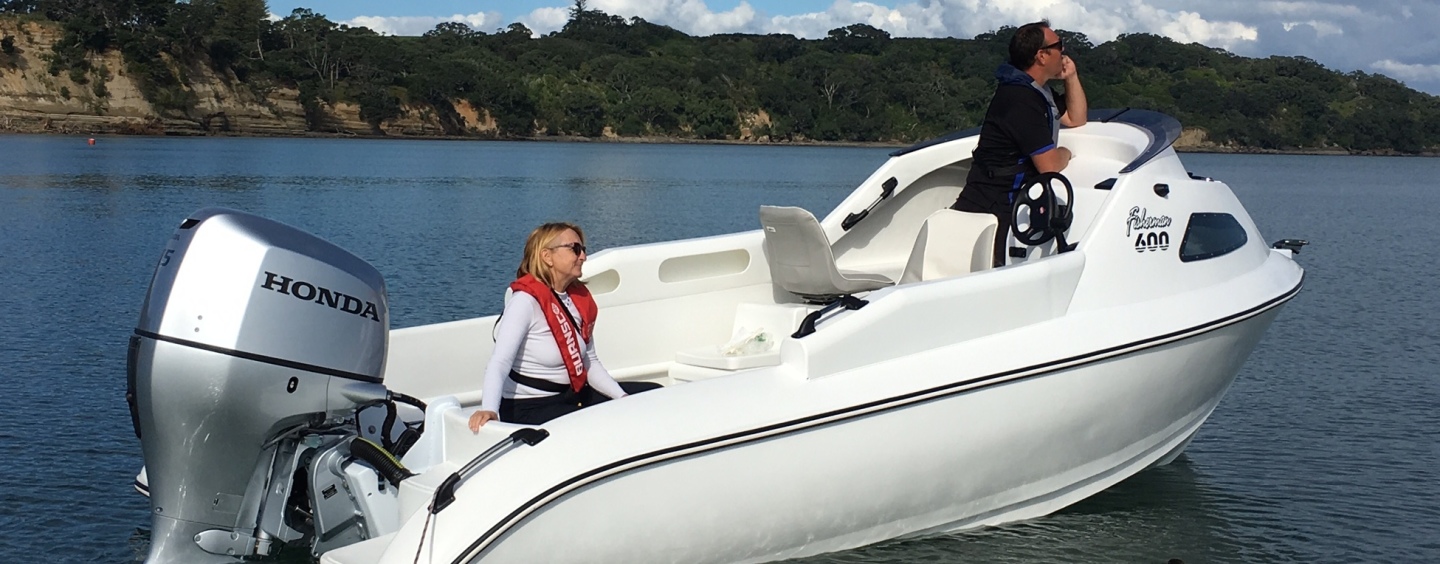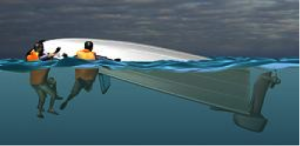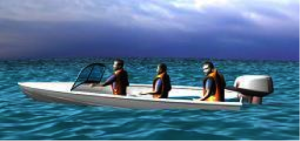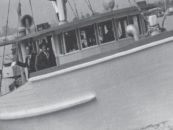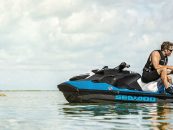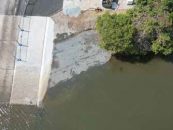Since 2006, all new recreational boats under six (6) metres in length must achieve either basic or level flotation. This required many manufacturers to increase the level of buoyancy and to display the Australian Builders Plate (ABP). This occurred because there were 45 deaths and 109 serious injuries associated with recreational boating annually, and was increasing with more inexperienced people boating. Fatal and serious injuries were estimated to cost $52 million annually, and were twice as high in boats under six (6) metres, often as a result of inadequate buoyancy.
Basic Flotation
(www.anzsbeg.com.au)
Basic flotation requires a boat to float in some form if swamped, and allows you to possibly cling to the upturned hull. The boat can be in any position as long as it floats within 15cm of the surface. This is safer if a lifejacket was being worn, but does not reduce the risks associated with predators such as sharks and crocodiles, or hypothermia in colder waters.
Level Flotation
(www.anzsbeg.com.au)
Level flotation requires a boat to float in a level position if swamped and is prevented from capsizing in calm water. Occupants can remain in the boat and bail the vessel. It provides more opportunity to put a lifejacket on, to call for assistance and would also reduce the risk of exposure to predators and the elements.
Many recreational boats only have basic flotation, often achieved by placing polystyrene under seats. Some boats display both basic and level flotation on their ABP, but reduce the number of occupants with level flotation. Other boats achieve level flotation and are virtually unsinkable. This certainly does not include inflatable boats.
Since July 2013, all commercial boats, including hire boats and those belonging to sailing clubs must achieve level flotation. All inflatables are assessed with at least the two largest air compartments deflated. The material used to provide buoyancy is a closed-cell foam, such as polyethylene, polypropylene, and polyurethane. Polystyrene does not meet the flotation standard. Foam buoyancy is required in all inflatable boats, and their air chambers are not considered to be equivalent to foam buoyancy.
Boating consumers, especially those without experience, would be significantly safer if all recreational boats were required to achieve level flotation.
Polyethylene is inherently buoyant and will float regardless of shape. Fibreglass and aluminium are denser than water and will sink unless they trap air within their form or in the foam they contain.
Polyethylene boats, such Mac Boats, have polyurethane foam to provide additional buoyancy and achieve level flotation with ease. A commercial operator recently stated that his dinghy, which had rated capacity of 250kg, had over 800kg of lead on board, and still floated when towed in the port. To demonstrate their buoyancy, polyethylene boats still float when cut in half, something that would not occur in fibreglass, aluminium boats, or inflatable boats.
Mac boats have a double skin, unlike fibreglass, aluminium and some plastic boats, which provides a double barrier. This is important in very cold waters and when near large predators, especially if the outer barrier is penetrated.
Polyethylene has five times the impact resistance of fibreglass, and is less likely to be damaged by rocks or coral. They will not be damaged, like inflatable boats, when mouthed by crocodiles. Polyethylene will not abrade fibreglass and makes an indestructible tender for larger craft.
Mac Boats are available at Me Tender Boats, 8 Waterway Drive in the Coomera Marine Precinct. For more information, go to www.metender.com.au, email bo***@me******.au , or call 0422 750 100.






















